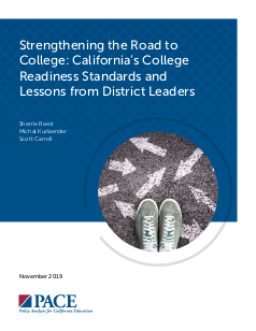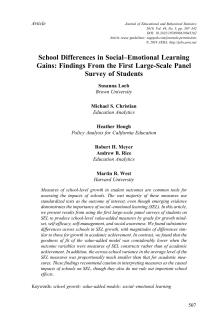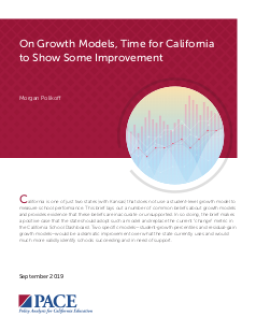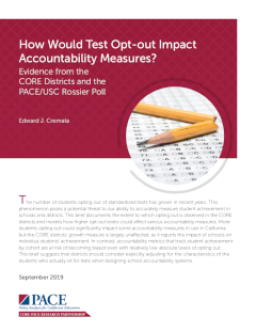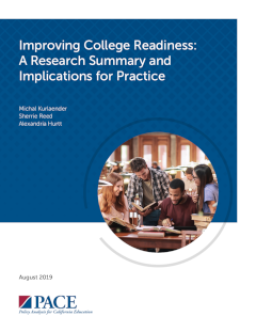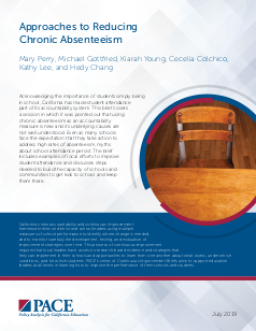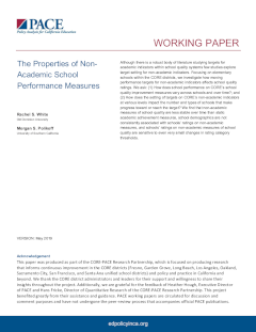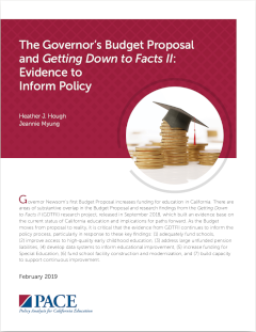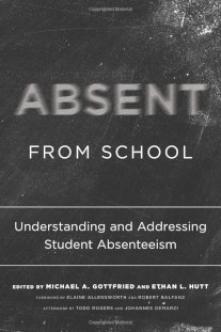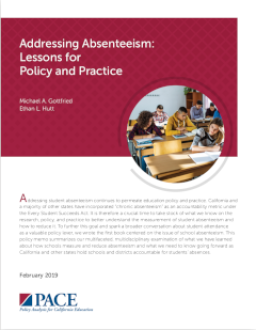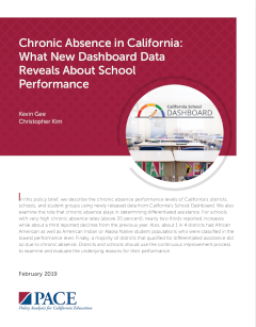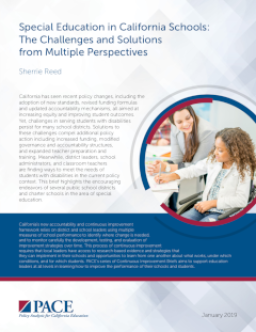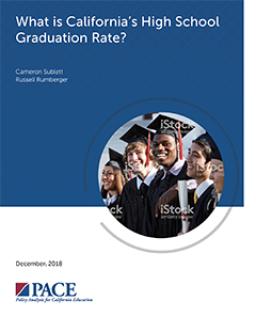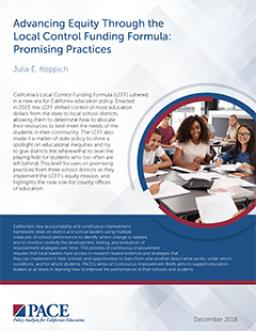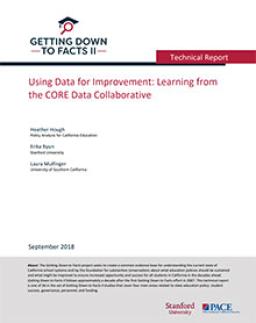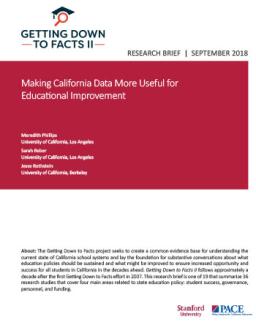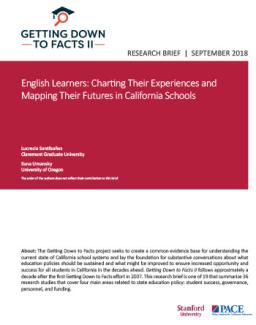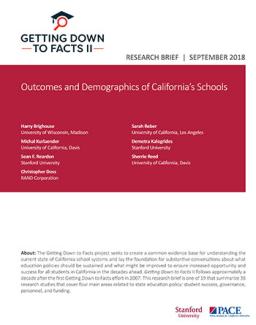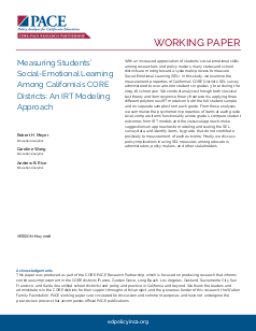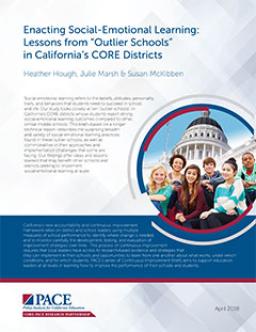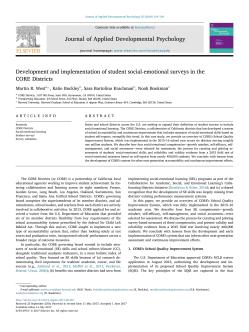Summary
Summary
Summary
Summary
The increase in students opting out of standardized tests is a threat to accurately measuring student achievement. This brief examines the effects of opting out in the CORE districts and models how it could affect accountability measures. More opt-outs could significantly impact some metrics, but the growth measure is largely unaffected. Metrics tracking achievement by cohort are at risk of bias, even with low levels of opting out. Adjusting for characteristics of students who take the tests could be a solution.
Summary
Summary
Summary
Summary
Summary
This brief analyzes the 2018 update of the California School Dashboard, examining improvements and areas for continued enhancement. Using data from the 2019 PACE/USC Rossier poll, the author characterizes use of and support for the Dashboard, finding low use, equity gaps, but high support and preference for the new Dashboard.
Summary
Governor Newsom’s first Budget Proposal increases funding for education in California. There are areas of substantive overlap in the Budget Proposal and research findings from the Getting Down to Facts II (GDTFII) research project, released in September 2018, which built an evidence base on the current status of California education and implications for paths forward. As the Budget moves from proposal to reality, it is critical that the evidence from GDTFII continues to inform the policy process.
Summary
Summary
In "Absent from School," PACE Executive Director Heather J. Hough analyzes student absenteeism using data from California's CORE districts. She explores the differences in absenteeism rates among students and schools, comparing them to other performance indicators. Dr. Hough also examines how schools' performance on chronic absence metrics corresponds to other accountability measures, highlighting the implications for reporting school-level measures of chronic absenteeism.
Summary
Summary
Summary
Summary
This report examines the challenges and limitations of using the Four-Year Adjusted Cohort Graduation Rate (ACGR) to measure high school graduation rates in California. Graduation rates serve different policy goals, and the requirements for a high school diploma vary widely. The ACGR does not account for students' characteristics, those who graduate in five or six years, or those who change schools. The report recommends addressing these issues by developing a more comprehensive graduation rate that accounts for different student populations and their paths to graduation.
Summary
Summary
Summary
Effective data use is crucial for continuous improvement, but there is confusion about how it differs from data use for other purposes. This report explains what data are most useful for continuous improvement and presents a case study of how the CORE data collaborative uses a multiple-measures approach to support decision-making.
Summary
California's education leaders and policymakers have limited ability to make informed decisions due to weaknesses in the state's education data systems. Although California has improved its data systems, it still falls behind other states in data availability and usefulness. The California Longitudinal Pupil Assessment and Data System (CALPADS) is not integrated with other data systems, and access issues further limit utilization. With additional investment, California could develop a comprehensive statewide data system to better understand what is and isn't working in its education system.
Summary
California's 1.3 million English learner (EL) students have diverse needs, and many lack access to grade-level content instruction, with English language development falling short. Bilingual and dual immersion programs benefit ELs' academic, linguistic, social, and life outcomes, but reclassification policies are currently in flux. Early-career teachers may not be adequately prepared to teach ELs, and funding mechanisms are weak. EL outcomes are complex to interpret as students move in and out of the subgroup, and education sectors are not aligned to address ELs' needs.
Summary
Public education in California shows progress, yet challenges remain in providing equal opportunities for all students. Poverty rates persist, and schools are highly segregated by race, ethnicity, family income, and language. While student outcomes are improving, significant achievement gaps exist, and California students perform worse than their peers in other states. Career technical education programs provide opportunities for diverse students, but there are gaps in tracking students' educational trajectories.
Summary
Summary
This study explores ten "outlier schools" in California's CORE districts that have strong social-emotional learning outcomes. The brief and infographic summarize the various practices found in these schools and the common implementation challenges faced. The findings offer lessons that can help other schools and districts implement social-emotional learning at scale.
